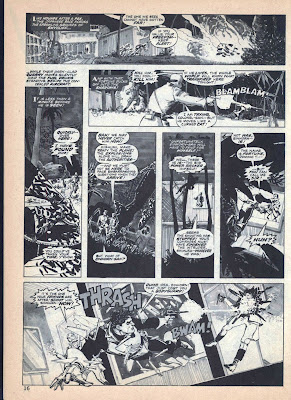‘Lowland Rider’ (342 pp) was published in August, 1988 by Tor Books. The cover artist is uncredited.
The novel is set in the mid-80s, and features as its protagonist a young man named Jesse Gordon. Gordon earns a living in New York City as an advertising copy writer; he and his his wife Donna have an infant daughter named Jennifer. As ‘Lowland’ opens, Gordon’s comfortable life is turned upside-down by an act of extreme violence, leaving him emotionally and psychologically devastated.
Permanently afflicted by post-traumatic stress syndrome, Gordon makes a life-changing decision to live out the rest of his days Underground – in the NYC subway system. Keeping his small stash of belongings in a coin-operated locker, Gordon joins the army of the malcontent, the insane, the criminal, and the alienated who perpetually ride the trains, sleeping in their seats and staying ever-watchful of offending the patrolling Transit Police.
Gordon soon adapts to his new life as an outcast, scavenging for food from dumpsters and wastebins, taking makeshift showers at public restrooms, and becoming ‘invisible’ to the notice of the everyday commuters.
Gordon discovers that there is someone else living in the network of tunnels and cul-de-sacs and abandoned utility rooms.....a man named Enoch, a man strangely garbed in glowing white clothes, a man who haunts the labyrinth of abandoned corridors and utility rooms of the New York City subway system. To Gordon, Enoch is a figure of evil; he has seen Enoch hunched and whispering over the dying victims of subway car muggings. Enoch, it appears, is the instigator of the ever-present mayhem committed on the subway cars.
His meetings with Enoch disturb Gordon, but at the same time, they impel him to break free of his consuming self-pity, and take action against the drug dealers who covertly rule the subway system. Together with Rags, an experienced ‘mole man’ of the subways, Gordon embarks on a careful campaign to foil Bob Montcalm.....a crooked cop, and the leader of the drug ring.
This action is not without its risks, however, for while Gordon’s decision to become a vigilante may give his life new meaning, it comes with its own risks. For Bob Montcalm, and the corrupt cops and lowlife dealers in his employ, have no scruples about wasting yet another vagrant…….
While the cover of ‘Lowland Rider’ gives the impression that this is a horror novel, in reality, it primarily is a crime novel, one with some vague supernatural overtones.
Most of the first half of the novel is preoccupied with documenting Jesse Gordon’s psychological turmoil and existential angst, in often overwrought prose; this, not surprisingly, makes the book a boring read. At its mid-point the novel does start to generate some momentum, as Gordon begins his campaign against the drug gang; these are ruthless adversaries, and there is some suspense as the clashes unfold.
Unfortunately, when in the latter chapters author Williamson turns at last to the mystery of Enoch and the novel’s tacked-on horror element, the plot becomes quite contrived, and the Final Revelation about Enoch’s existence is poorly composed..... and quite unconvincing.
Summing up, ‘Lowland Rider’ is modestly successful as a sort of 80s 'vigilante' genre novel; as a horror novel, it’s a failure.
Unfortunately, when in the latter chapters author Williamson turns at last to the mystery of Enoch and the novel’s tacked-on horror element, the plot becomes quite contrived, and the Final Revelation about Enoch’s existence is poorly composed..... and quite unconvincing.
Summing up, ‘Lowland Rider’ is modestly successful as a sort of 80s 'vigilante' genre novel; as a horror novel, it’s a failure.
I can’t recommend this one to anyone other than die-hard Williamson fans.


























































.jpg)
















